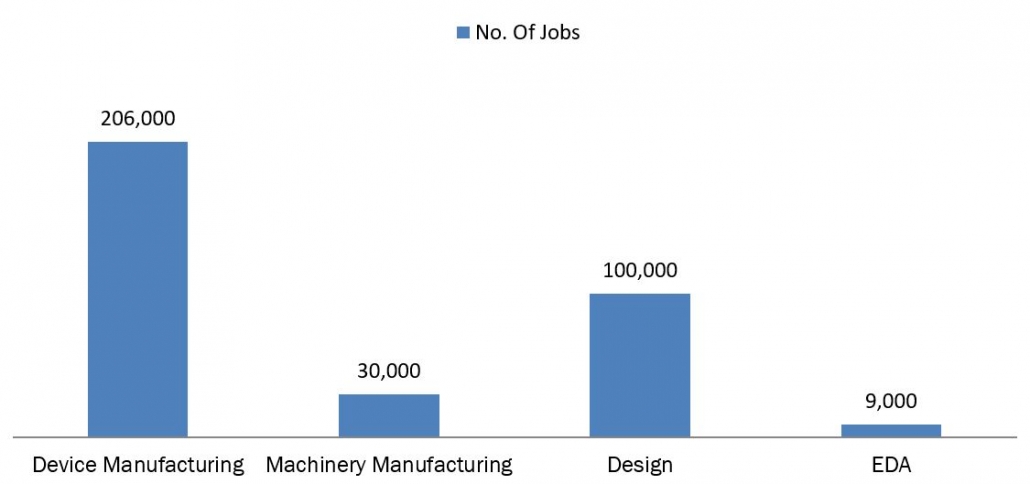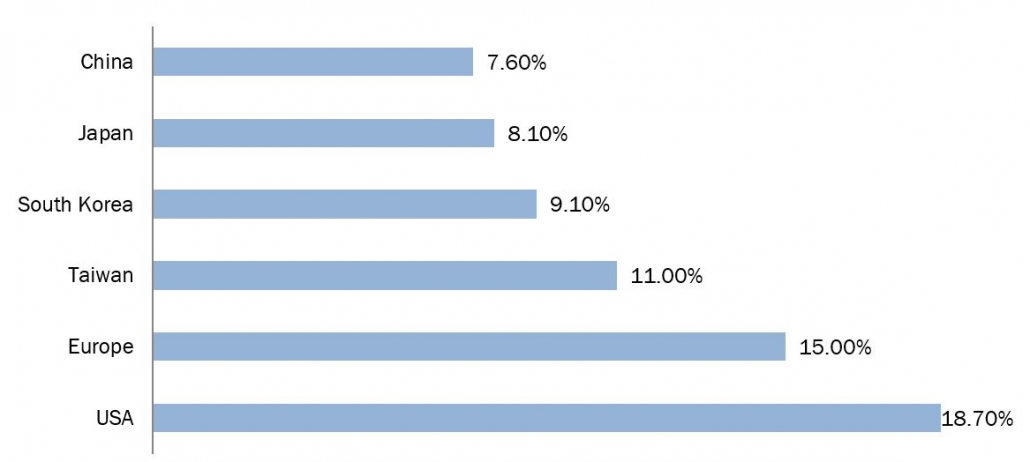Demand for Advanced Packaging Technologies to Fuel the Semiconductor Lead Frame Market
A semiconductor lead frame is a metal framework that houses and connects integrated circuits (ICs), discrete devices, and other semiconductor components. It allows for the passage of electrical signals between the IC and peripheral environments, guaranteeing dependable connectivity and efficient performance in semiconductor device manufacture.
A semiconductor lead frame is a critical component in the assembly and packaging of semiconductor devices. It serves as a support structure for the integrated circuit (IC) chip and provides electrical connections between the chip and the external circuitry.
Semiconductor lead frames are often built of metal alloys like copper or iron-nickel alloys. These materials have excellent electrical conductivity, thermal conductivity, and mechanical strength. The lead frame is a grid-like framework with leads or pins protruding outwards. The leads link the semiconductor device to the external circuit and allow electrical impulses to flow.
The semiconductor lead frame market is expanding due to rising demand for electronic devices and a growing trend towards miniaturization of electronic components. As the size and complexity of electronic devices shrink, there is a high demand for smaller and more precise lead frames.
Wire bonding is a technique for creating electrical connections between a semiconductor chip and lead frames by utilizing thin wires such as aluminum or gold. This improves signal transmission. Following wire bonding, the assembly is molded with a protective encapsulant that protects the chip and wire bonds while also providing insulation and heat dissipation.
After encapsulation, the lead frame assembly goes through singulation, which separates individual semiconductor devices from the main lead frame panel. Semiconductor lead frames are widely used in the production of integrated circuits, microcontrollers, and discrete components.
The growing usage of sophisticated packaging methods, such as wire bonding, is a primary driver of the semiconductor lead frame market. Improving the accuracy of wire bonding technology is expected to increase demand in the semiconductor business.
In November 2023, ams-OSRAM, a global pioneer in intelligent sensors and emitters, added Red, True Green, and Blue to its OSTAR® Projection Compact range of ultra-high-brightness LEDs. The high current density and brightness of these LEDs made them excellent for high-power lighting solutions. The True Green variant was the most visible 520 nm product in its class.
Stamping technology is a quick and inexpensive technique that presses metal sheets or foil against a die to form desired patterns or shapes. It is largely utilized in the production of lead frames for consumer devices like smartphones and tablets.
The semiconductor business in the United States plays a crucial role in the economy by supplying inputs to many industries, creating employment, and generating income. In 2022, the semiconductor sector employed over 2.3 million people.
The sector employs around 345,000 domestic workers in R&D, design, and production. Through its supply chains and employee wage spending, the semiconductor industry supports an additional 5.7 jobs in the US economy.
Figure 1: Number of Domestic Workers Employed in the Semiconductor Industry, 2023

Source: Semiconductor Industry Association
The growing use of alternative packaging technologies, such as fan-out wafer-level packaging (FOWLP) and system-in-package (SiP) solutions, is limiting semiconductor lead frame market growth. These technologies offer several advantages over traditional lead frame-based packaging, including higher levels of integration and improved thermal performance.
Some semiconductor and electronics businesses are migrating away from lead frame-based packaging solutions in favor of these alternatives, which are projected to slow the market over the projection period. Furthermore, the persistent scarcity of semiconductor components influences the semiconductor lead frame market since it affects the total demand for semiconductor devices and the components needed to create them, including lead frames. The scarcity raises prices and makes it more difficult for certain producers to obtain the materials and resources they need to create their products.
In 2022, semiconductor end-use sales in the industrial, consumer, and automotive industries saw fluctuations in market share. Historically, these industries accounted for one-third of total sales, but the recent rise in market share indicates shifts in demand that will drive the chip business for the next decade.
Innovation in the automotive, industrial, and consumer electronics industries ensures that the industry’s growth continues, with revenues potentially reaching $1 trillion in 2030. To accommodate rising chip demand, semiconductor companies have spent billions of dollars in additional investments over the past decade.
Figure 2: Semiconductor Sales Based on End-Users, in Billion USD, 2022
![]()
Source: Semiconductor Industry Association
The growing demand for electronic devices in industries such as automotive, consumer electronics, telecommunications, and healthcare is driving the demand for semiconductor lead frames. This is due to rapid technological advancements in semiconductor packaging techniques and materials that allow for smaller, lighter, and more efficient devices.
The semiconductor industry’s expansion, fueled by advances in AI, IoT, 5G, and automotive electronics, is driving up demand for semiconductor lead frames. The rising usage of sophisticated packaging technologies such as system-in-package and fan-out wafer-level packaging helps to drive industry development.
In terms of R&D investment as a percentage of revenue, the semiconductor business in the United States comes in second only behind pharmaceuticals and biotechnology. Despite increased worldwide rivalry, American companies invest more in R&D than any other country’s semiconductor sector. This significant reinvestment fuels innovation, maintains worldwide sales industry leadership, and produces employment across the United States. According to SIA statistics, the United States spends 18.7%, whereas Europe spends 15.0%, Taiwan 11.0%, South Korea 9.1%, Japan 8.1%, and China 7.6%.
Figure 3: R&D Expenditures as a Percentage of Sales, 2022

Source: Semiconductor Industry Association
The semiconductor industry expansion in various countries in the Asia Pacific region is expected to drive the semiconductor lead frame market. Rising demand for semiconductors is accompanied by an increase in demand for various equipment used to manufacture semiconductors, such as lead frames.
Semiconductor lead frames are essential in the packaging and connectivity of semiconductor devices. They provide dependable electrical connections and protect the sensitive semiconductor chip. The semiconductor application’s unique needs and desired performance characteristics determine the lead frame design and material used.
In conclusion, Semiconductor lead frames are critical in the semiconductor packing process, allowing for the creation of high-performance electronic devices. Copper and its alloys are widely utilized because of their high electrical conductivity and thermal qualities, although iron-nickel alloys and composite materials may also be employed in specific applications.
Table 1: Key Developments
|
Year |
Development |
|
January 2024 |
TOPPAN Holdings agreed to buy 75% of KEYFIELDS’ shares and form a subsidiary in February. As a result of the transfer, TOPPAN’s digital transformation (DX) services in logistics will be strengthened, with a range of solutions available to address the rising need for logistics warehouse DX in Japanese and ASEAN markets. TOPPAN Group seeks to build its logistics DX business in Japan and the ASEAN area by developing end-to-end solutions and new business models. |
|
October 2023 |
Precision Micro increased manufacturing capacity at its Fort Dunlop plant in Birmingham, UK, by adding a second £1.8 million etch room. The room is equipped with three efficient etch machines and a semi-automated print frame, which are intended to reduce human intervention when printing photoresists onto bigger sheet metals up to 1500mm x 600mm. Customers benefit from this investment since it enhances throughput and lowers costs. |
Source: Knowledge Sourcing Intelligence Analysis


